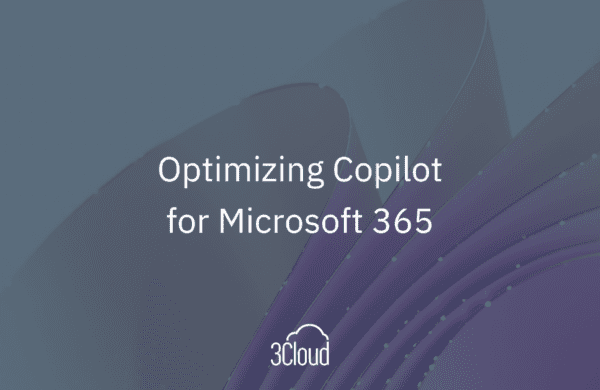Last year, I went shopping for a new van. After years of saving, weeks of research, and half a dozen test drives, I was ready. I finally found myself at the negotiating table. The van cost a little more than I was looking to pay, but it was loaded with all the options. During negotiations, a thought hit me like a ton of bricks. I would be coming home in a shiny new ride… and a monthly payment. I sighed and looked at my fully paid-off, yet well-used SUV. It still had life left in it. Instead of a new van, I went home in my old SUV. I gave it a wash and called it a day. It’s still serving me today. Maybe this year I’ll replace it.
New technology is a lot like those new cars on the dealership lots. They boast of efficiency and power, of elegance and ease-of-use. But, new tech is not all roses and ROI, though. Every new tool and new platform can bring a host of new problems. It might be time to invest, but it might not be. The decision comes down to the business needs versus the capabilities and condition of the existing system. It’s all too easy to be swept up in the new. In this post, I ‘ll be examining some factors that affect the decision to upgrade and its timing.
Support and Maintenance
Your current system might be ten years old, or even twenty. It might have gone through server updates, but it is decidedly on-prem. Our old friends SSIS, SSAS, and SSRS (with the SQL engine running the show) are all present and accounted for. It might be considered “boring” in today’s age of Azure, data lakes, and AI.
Perhaps surprisingly though, age, by itself, should not be a factor in the decision. For instance, some bridges are still in use after hundreds of years, but then again, some fifty-year-old bridges are falling apart. Instead, you need to look at certain maintenance-related factors:
- The solution can be difficult-to-maintain, requiring excessive maintenance
- The servers can break down, requiring excessive maintenance
- The platform may no longer be supported
- The solution can lack sufficient automation
- The skillset to maintain the solution can be rare or niche
- The solution may not scale well for current and future volume
However, if the platform is supported and the solution runs well, it should be an indicator that it is not yet time to move up. The dev team is familiar with the existing platform and the solution. If something goes wrong, they will often know exactly where to look and how to fix it. A new platform might bring new quirks and gotchas, and the team would need to acclimate to those. Fixes and revisions could take longer than with the existing system. If it’s not broken, don’t fix it.
Cost
There’s a certain amount of shock that most people experience when they go to buy a vehicle. The purchase contract has a dozen items that make the price balloon by thousands of dollars. When you add up the costs of migrating to a new platform, you can have a similar “sticker shock”.
The cost equation is decidedly non-trivial. There’s upfront costs and ongoing costs, so it gets tricky. With an existing system, upfront costs are done. With a new cloud-based system, the upfront infrastructure costs are minimal too. Where the new system bites you, though, is adaptation and rework. The old system might need to be reworked or even recreated from scratch. Until the new system reaches a certain minimum of functionality, your team will be supporting two systems in parallel. Getting to that point may require months of work. That is a significant investment in time and resources.
In terms of ongoing costs, there is some tradeoff:
- On-prem systems require administrators to keep the OS and platform software updated. They need to manage backup systems, networks, hardware, and data center operating costs.
- Cloud-based systems are managed by the platform vendor and allow elastic scaling. The cost is coalesced into a neat consumption-based monthly payment.
Calculating these costs are non-trivial and there is no easy winner here. What is clear, however, is that shiny new tech is a big investment. It requires significant justification to move forward. It also highlights the benefits of solution accelerators like BlueGranite’s Catalyst offerings that can drastically reduce the effort and time to implement a solution in the cloud.
Opportunity
Most on-prem platforms have their origins when internet connections were initiated by the mechanical warbles of modem handshaking. The data lived and died on-prem, and data came in large overnight batches. The classic Microsoft BI stack is designed with these scenarios in mind. Once a day or several times a day, a batch would update a data warehouse or OLAP model.
Today, that kind of data is often only a fraction of the data that businesses actually need. They most likely require their data to be updated in real-time. They might also need data from IoT devices constantly sending streams of data. Or, they might need to capture data from outside data sources. Integrating these new paradigms of data capture is difficult, if not practically impossible in a traditional on-prem solution. It could be that a monolithic server just cannot keep up with that volume of data. It could be that it’s not responsive enough. Or, it might just not have the tools or ability to connect to modern sources.
How businesses consume data has shifted as well. Not only do they look to dynamic dashboards and interactive analysis tools, but AI and data science has become a major consumer of business data. While some data science workloads will work with on-prem solutions, many require the grunt of cloud-based tools to deliver their insights and enhance business processes.
When these new sources and analytics come into play, it becomes a strong case to modernize your solution. On the other hand, if those are not on your immediate roadmap, you might want to stick with what you currently have.
So, Is New For You?
If you’ve made it this far, you heard some good arguments for staying put and some good arguments for moving forward with a migration to the cloud. You’ve also seen some of the complexities of such a decision exposed. There are a lot of variables to take in, and it’s not always clear whether investing in your current solution or migrating is the best choice. Don’t worry though, you are not alone. If you need advice and guidance on the current standing or future of your BI solution, let BlueGranite offer some words of wisdom, contact us today!





